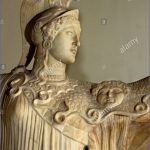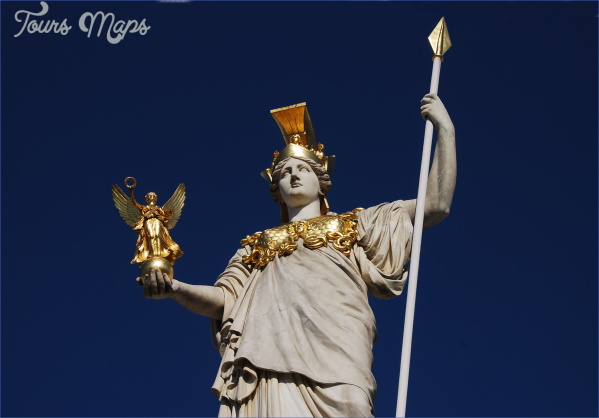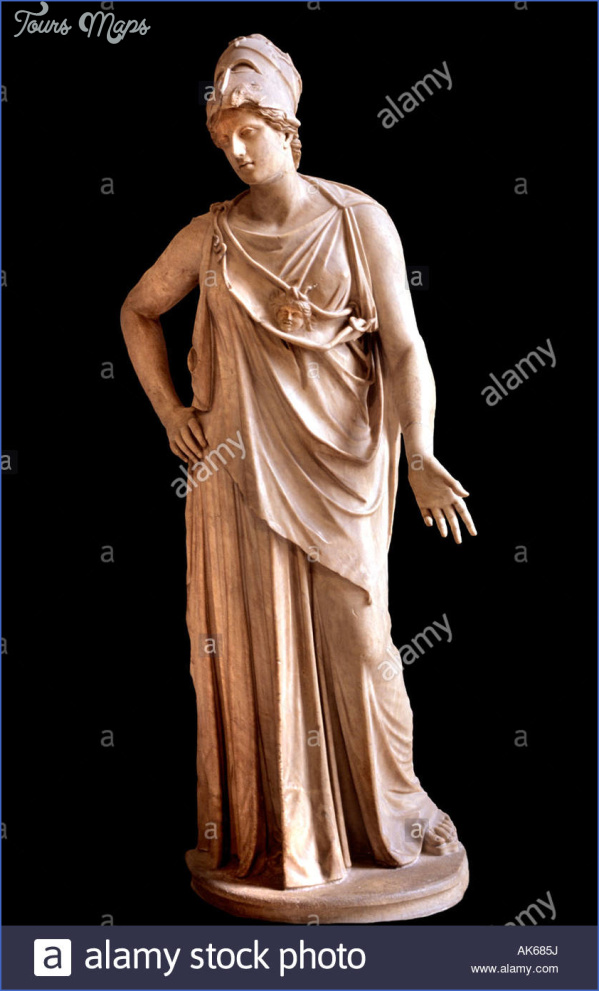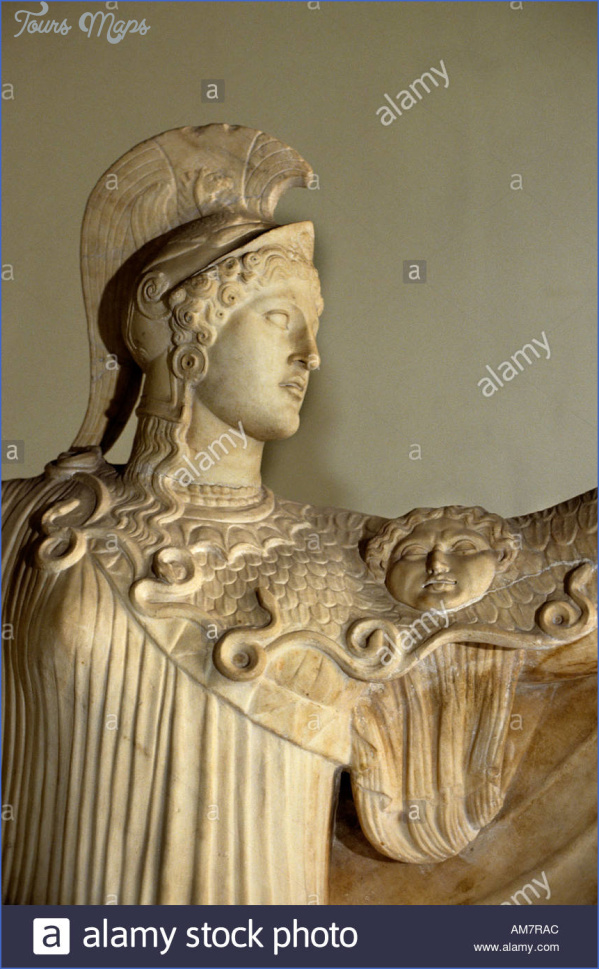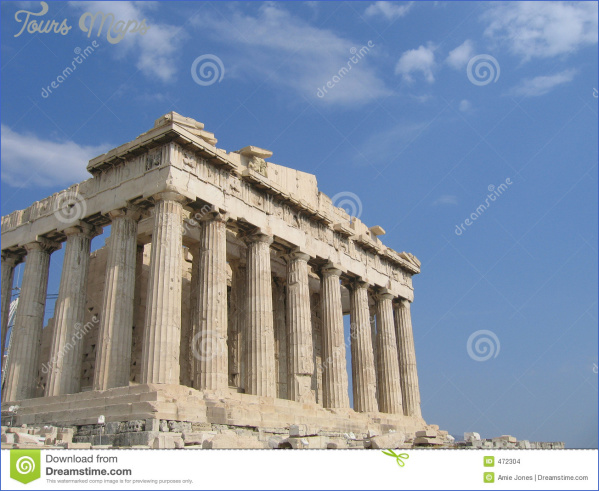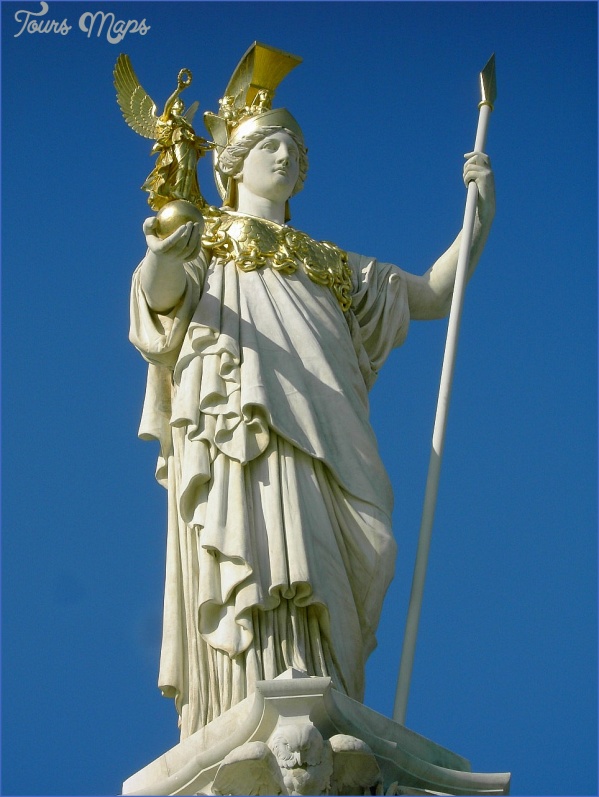The natural beauty and resources of Athens and its territory, Attica, attracted the attentions of both Athene and Poseidon. Each claimed them as their own. So they raced in their chariots to the Acropolis and leapt on to the rock. Poseidon struck the ground with his trident, and salt water bubbled from beneath the earth. In response, Athene planted a young sapling, a silver-leaved olive tree, which rustled in the breeze. As the two gods prepared to settle their quarrel by brute force, Zeus intervened, first hurling a thunderbolt, which exploded on the ground between them, then appearing in person to order that the issue be resolved in a law-court with the other gods as jurors. Called as witness, Cecrops, King of Athens, praised the usefulness of Athene’s gift. In a subsequent vote, the male gods supported Poseidon, while the goddesses championed Athene. The numbers favoured Athene, and the land was awarded to her. Poseidon stalked off enraged and flooded the local Thriasian Plain, but in time he was reconciled and Athens developed a strong navy.
Athene & Poseidon Contest for Attica Photo Gallery
Wearing her snake-fringed aegis, Athene confronts Poseidon on an Attic black figure vase, c. 540-530 BC.
The olive tree thrived throughout Attica and on the Acropolis, where it was revered in historical times. In 480 bc a sacred olive tree was burned by the invading Persians, but by the next morning a new shoot 45 cm (18 in.) long had sprouted. As Herodotus records, it was interpreted as an omen of Athens’ eventual victory, while Pindar describes this tree as: ‘unconquered, self-reviving, a cause of terror to spear-wielding enemies. It thrives in Attica, grey-leaved, our country’s caregiver: the olive tree. Neither young nor old can harm it with their hands, for Protecting Zeus keeps guard with his all-seeing gaze, and with him grey-eyed Athene.’
In the fifth century bc the stories of the birth of Athene and her contest with Poseidon over Attica were commemorated in the sculptures of the Parthenon’s two pedim.
Maybe You Like Them Too
- Theseus & Peirithous
- The Voyage of the Argo Begins
- Minos, his Loves & his Family
- The Centaurs
- Athens in History & Today



